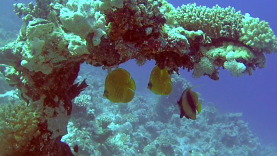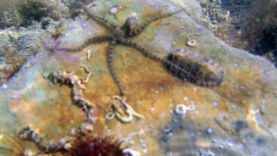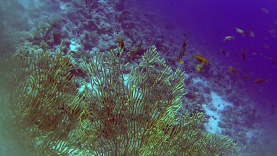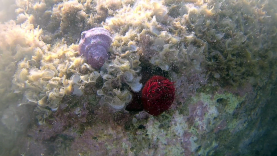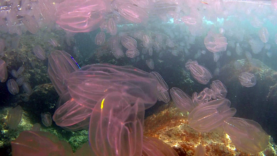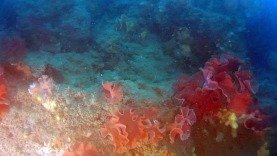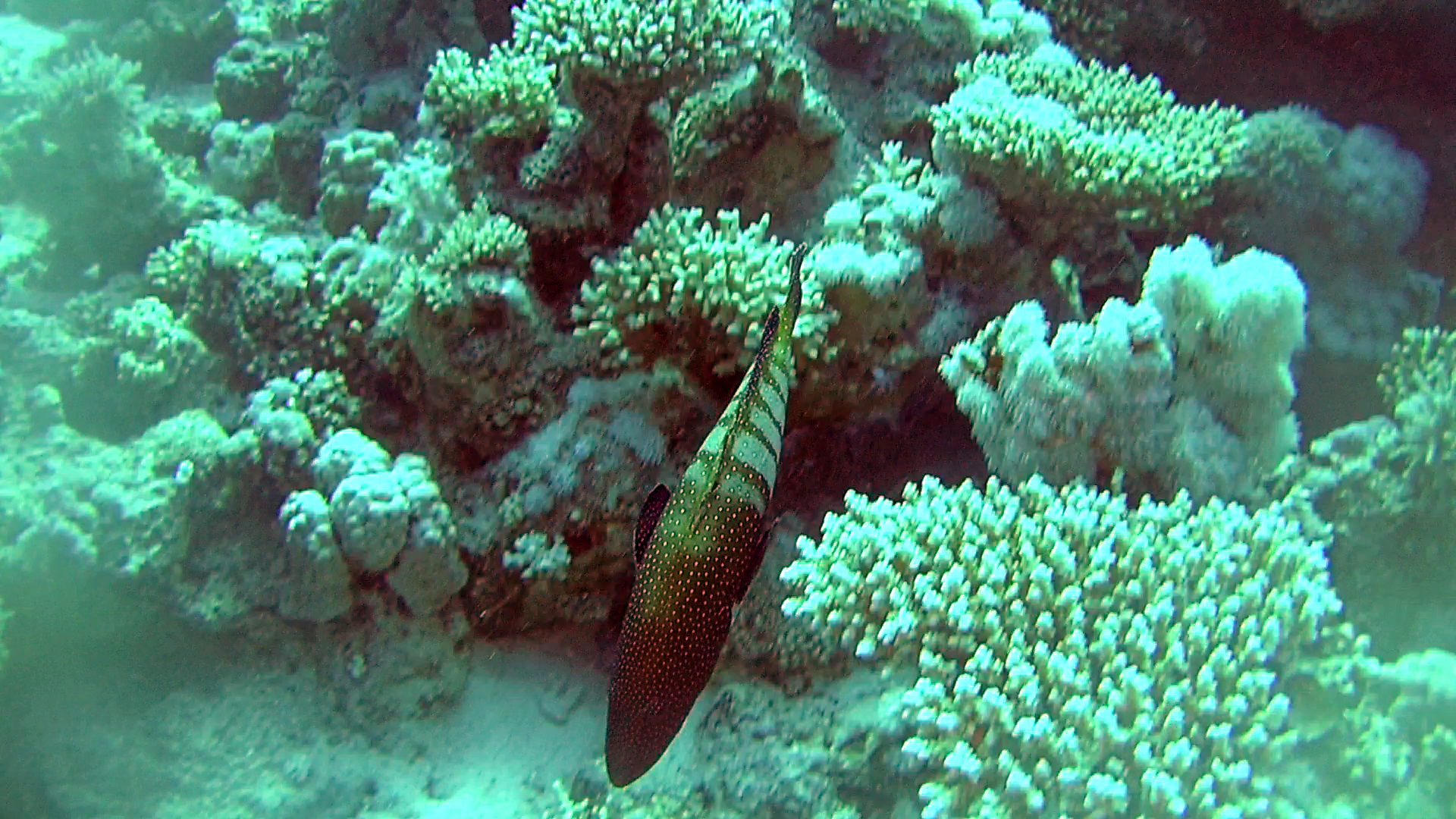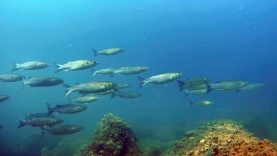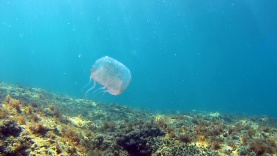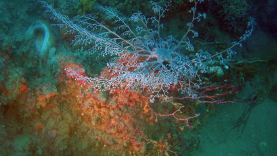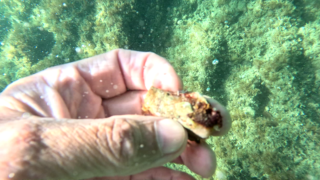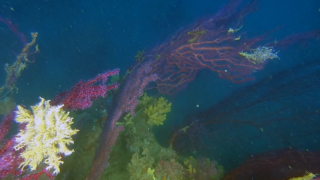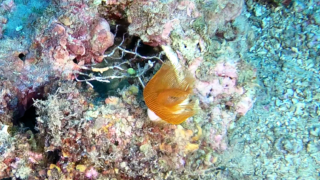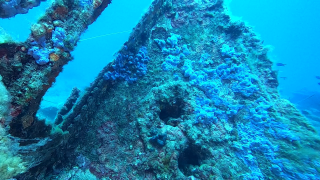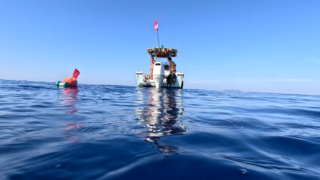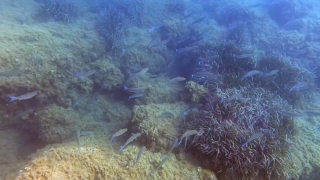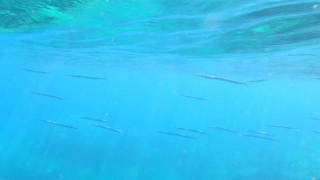Reteporidae - Reteporella Grimaldii
Reteporella Grimaldii is a species of bryozoans in the family Reteporidae. It is composed of a colony of small animals that form a limestone substrate which takes the form of a refined lace. Hence the name of sea lace. The animals that compose it live on organic particles, plankton, filtering the water carried by the current. Trina di mare Reteporella Grimaldii intotheblue.it
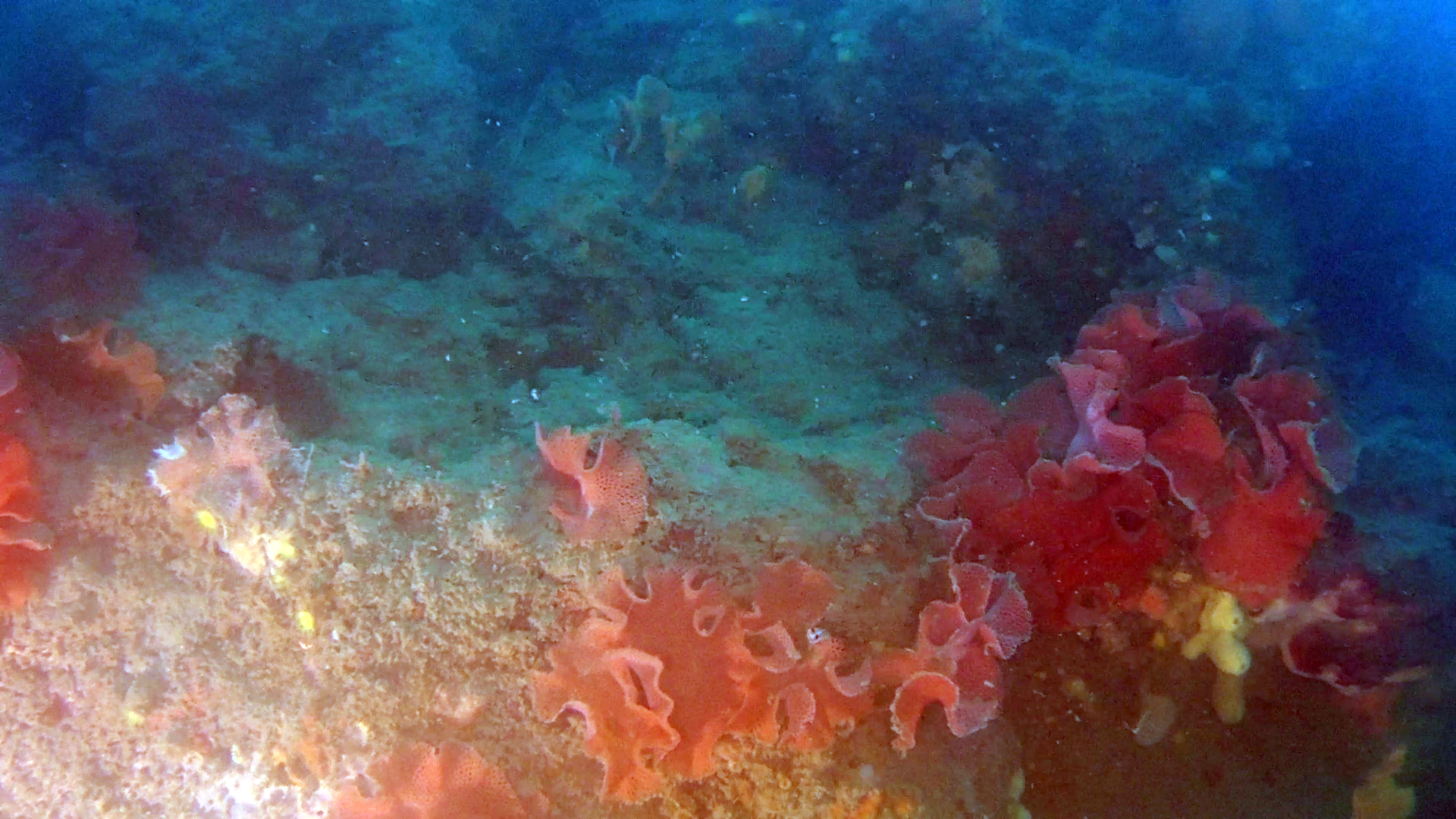
The Reteporella can take on different colors based on the species and the environmental conditions in which it lives. We have little information on the environment in which it lives but we can say with certainty, based on our direct experience, that it is possible to meet it from 10 meters up to 100 meters deep.
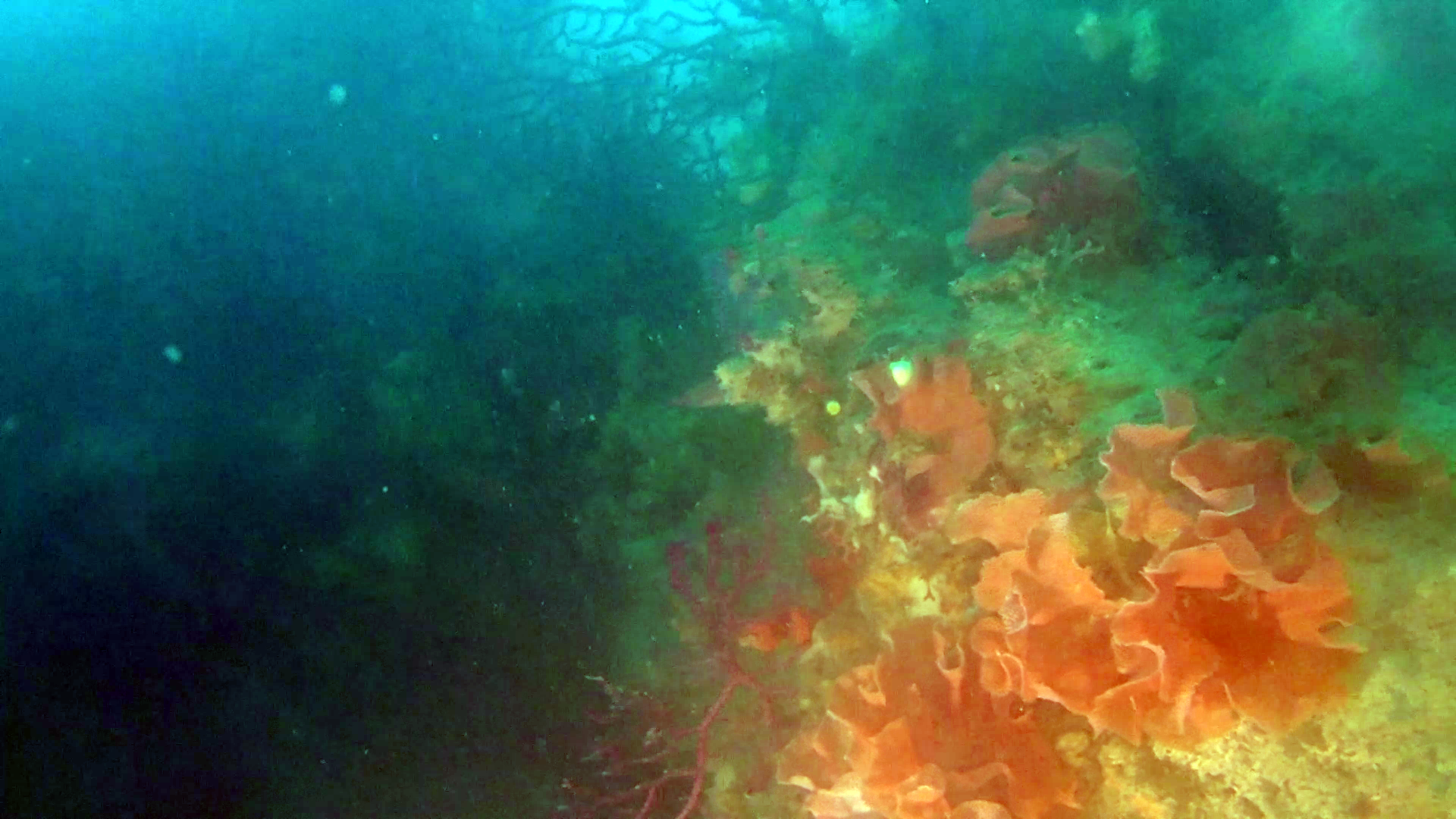
The video we show you was shot in the Mediterranea Sea and more precisely in the Tuscany Archipelago at 82 meters; even if the images are not clear due to a rocky bottom resting on a muddy area and consequently the bottom currents have made the water not very transparent.

Most marine species live in tropical waters at depths less than 100 meters. However, a few have been found in deep-sea trenches, especially around cold seeps, and others near the poles. The great majority are sessile. Encrusting forms are much the commonest of these in shallow seas, but erect forms become more common as the depth increases.
Bryozoans are immobile, typically residing on hard natural stone including, but not limited to grains, shells, and rocks. Such sediment is customarily found in freshwater type marine niches, although a majority of Bryozoans develop in marine landscapes. It is not uncommon for colonies to grow on sediment and various other solid pseudo-rock formations. They are native to all five oceans making them a more cosmopolitan species.
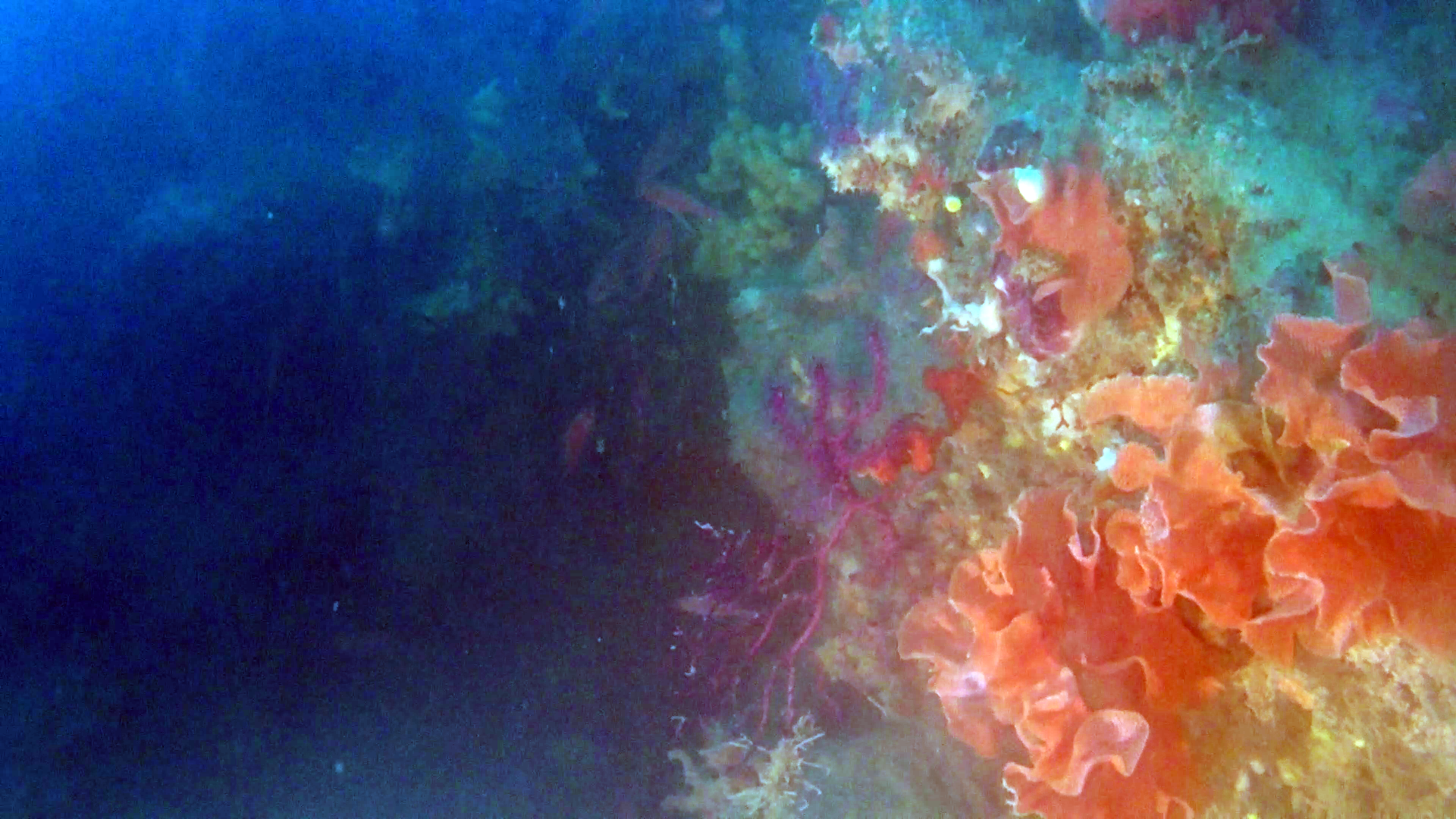
Bryozoans are generally associated with the term colonies. Once a Bryozoa settles on a hard substance, after its larval phase, it is physically capable of reproducing asexually through budding. The term colony literally stems from the word clones. These colonies can grow thousands of individual zooids in a relatively short period of time. Even though colonies of zooids grow through asexual reproduction, Bryozoans are hermaphrodites and colonies are started through sexual reproduction. reteporidae reteporella grimaldii
When colonies grow too large, however, they can split in two. This is the only case where asexual reproduction results in a new colony separate from its predecessor. Most colonies are stationary. Indeed, these colonies tend to be settled on immobile substances such as sediment and coarse substances.
https://it.wikipedia.org/wiki/Reteporella_grimaldii
https://www.intotheblue.it/2017/04/09/bryozoan-retepor…i-intotheblue-it/
(tratto da Wikipedia)

